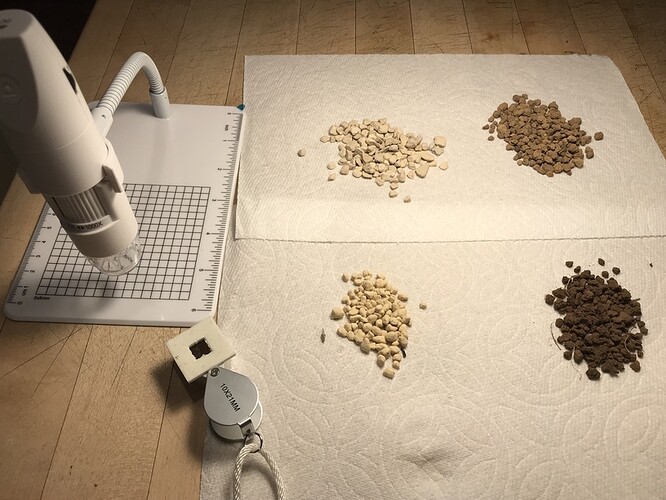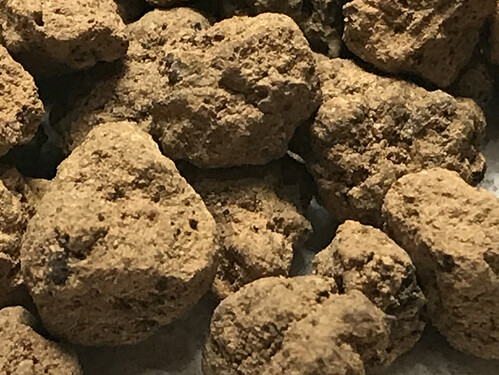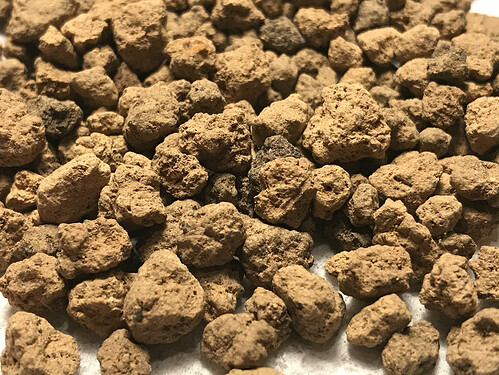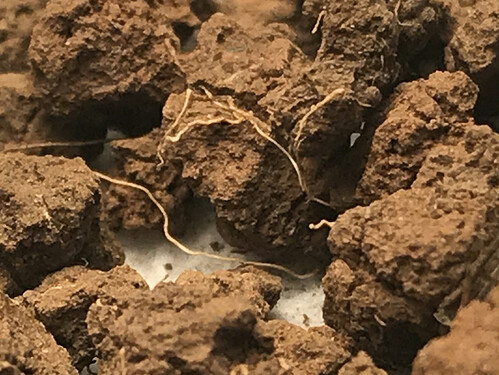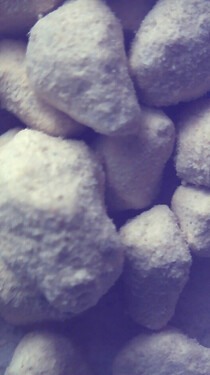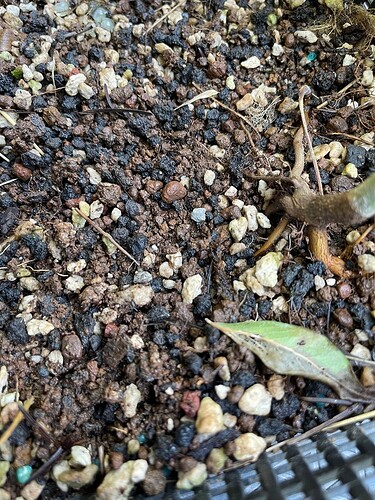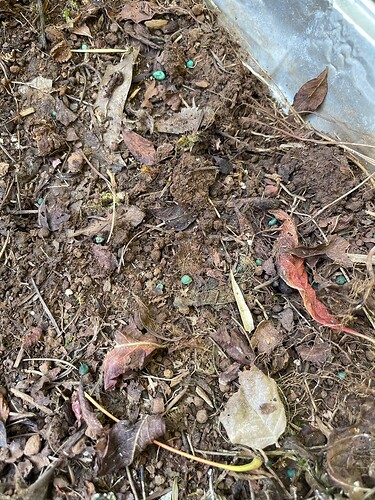Went down a bit of a rabbit hole trying to do inexpensive microphotographs of the Oregon candidate for closeup inspection and comparing to imported Akadama. Long story short, my iPhone with a $5 hand lens taped to it is better than a $30 digital microscope or the $130 digital microscope I purchased on Amazon.
I am still getting set up for doing basic physical testing of the materials, delayed due to tangential impacts from wildfire season…and of course the store-bought microscope debacle…but here are some decent close ups of various materials including: Akadama, the Oregon candidate/replacement, Kanuma, and high-quality diatomaceous earth. All granules approximately 1/8-1/4 inch in size.
Clockwise from top left: Diatomaceous Earth from Daybreak Gardens, Akadama, Oregon “Akadama” Candidate, and Kanuma. Harbor Freight hand lens (with Scotch
double-sided tape) and the cheaper (and better) of the two digital microscopes ($30).
Close-up of DE. Grains are rounded on edges, but the clasts themselves are still a bit angular. There is no visible porosity, but the density is very low and knowing what it is can expect it to be very porous. I will do some water absorption tests on this and other materials later in winter.
This is the best close-up of the imported Akadama…showing much surface texture and the yellowish brown clays.
Slightly wider view of Akadama
Here is the Oregon Akadama Candidate showing fine root material, much deeper brown coloration and fresh broken texture. The material is screened once for size and arrived very damp. The color lightens only slightly upon drying.
Slightly wider view of same Oregon Akadama candidate material.
Finally, a close-up of the Kanuma grains showing very well rounded clasts and a surface coating of fine dusty clays.
And to close the door on why a $5 hand lens strapped to an iPhone beats a store-bought digital microscope…
